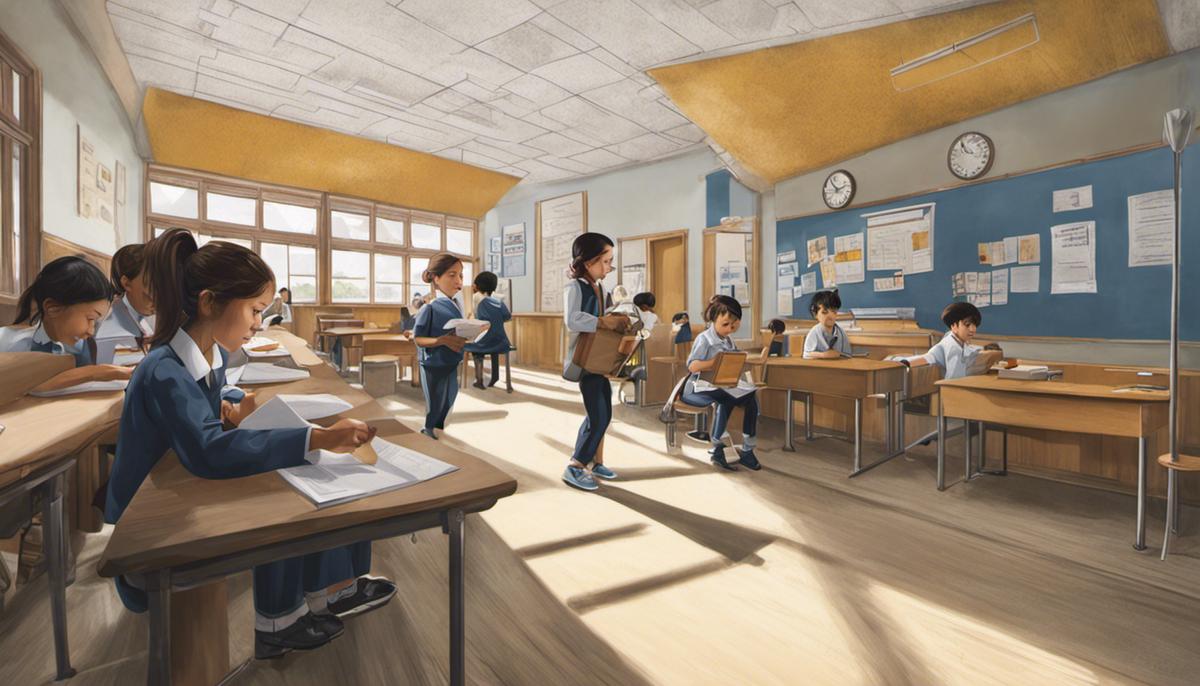When exploring the prospects, implications, and path towards inclusivity, it’s essential to consider the complexity associated with foreign children receiving primary education in a different country, like Africa. Legislation and procedures governing their admission, the educational impact, and socio-cultural integration are fundamental tenets in understanding this article.
Globally, laws and educational models vary, making it significant to decipher the specific parameters that could influence foreign students’ overall experience. This acknowledgement does not only pave the way for an informed discussion about the rights and permissions required for these students but also tackles the instructional shifts needed and socio-cultural aspects to be addressed.
Read this –Step-by-Step: How to Renew Your Passport at the US Embassy: A Quick and Easy Guide
Legality and Procedure of Admission
- The educational voyage of international students involves navigating a complex labyrinth of legal procedures and protocols.
- A crucial starting point for this journey is the acquisition of the proper visa, notably the F-1 visa in the U.S. This document permits foreign students to attend academic
- institutions, primary or secondary, maintaining their stay through enrolled status.
- It’s vital to note that the issuance of the F-1 visa is contingent on the educational institution’s standing with the Student and Exchange Visitor Program (SEVP).
- Only institutions of learning certified by the SEVP can enroll foreign students, lending added weight to informed school selection.
- Success in premiere educational institutions hinges on the preliminary obstacle of admission for international students.
- Educational entities tend to delineate their own admission protocols and requirements in congruence with state and federal guidelines.
- Common elements across these procedures encompass proficiency demonstration in English and evidence of financial sufficiency to withstand the costs of education and living
- expenses, as well as maintaining a residence abroad that the student harbors no intention of surrendering.
- Consular officers hold the discretionary power to issue visas after the evaluation of applications and interviews, thereby cementing their integral role in the process.
- Moreover, parents of international students are privy to derivative F-2 visas, allowing them to accompany their children on this educational sojourn.
- However, bearing an F-2 visa does not validate eligibility to work or study in the U.S. Invaluable enhancements to the visa issuance and admission processes are made through active engagement with associated institutional representatives.
These individuals, clad in the armor of knowledge and experiential insight, can significantly alleviate the process’s rigors and complexities.
Ultimately, the totality of the process keeps national security, student welfare, and academic integrity at the forefront of consideration.

Educational Impact
International student inclusion in primary schools has a significant impact on academic environments, enriching educational content, fostering social competencies, and driving advancements in teaching methodologies and curricula. Exposure to international students broadens local students’ academic understanding, providing unique global perspectives and cultural insights. This fosters a more comprehensive world view, enriching the overall educational experience.
The presence of international students also improves the development of social competencies, as interaction with peers from diverse cultures fosters inclusivity and acceptance of diverse viewpoints. This diversity helps students acquire critical social skills like empathy, cooperation, and respect for different cultures and perspectives.
Educators are encouraged to adapt and innovate strategies to cater to the diverse backgrounds and learning abilities of international students, such as bilingual teaching methods, differentiated instruction, or customized learning material. This dynamic educational environment not only aids in a more nuanced learning experience but also contributes significantly to the professional development of teachers. Overall, international student inclusion in primary schools shapes a more robust, diverse, and enriched educational environment, reinforcing the ideal of education being a global and collaborative endeavor.

Socio-Cultural Integration
The socio-cultural integration process of international students is influenced by various contextual factors such as school environment, parent involvement, and curriculum design. Eccles’ expectancy-value theory suggests that a student’s beliefs and values, including those of teachers and parents, directly influence their academic performance and social integration. An inclusive school environment that acknowledges diversity and provides adequate language support can facilitate the integration of foreign students.
Active parental involvement can mitigate potential transitional difficulties by fostering communication with school personnel, understanding the curriculum, and engaging in their child’s academic development. Curriculum design is another essential component, celebrating diversity, incorporating global perspectives, and diverse teaching methodologies. This approach promotes mutual respect, understanding, and empathy among students from different cultural backgrounds. By understanding and leveraging these factors, schools can provide a truly international and inclusive education, encouraging diverse perspectives and fostering global citizens.

The complexities that come with foreign students studying in primary schools extend beyond legal boundaries and procedural intricacies. It indeed presses upon the learning environment and the very essence of social and cultural spectrums. With pedagogical adjustments, educators are challenged to ensure the equilibrium of learning outcomes and classroom dynamics.
While addressing socio-cultural integration, it’s evident that language barriers, cultural differences, and social biases can be hurdles, yet they also provide opportunities for facilitating holistic growth and the embracement of diversity. Essentially, integrating foreign students into primary education systems is a compelling journey that requires comprehensive understanding, strategies, and initiatives to create a thriving and conducive learning atmosphere for all.




